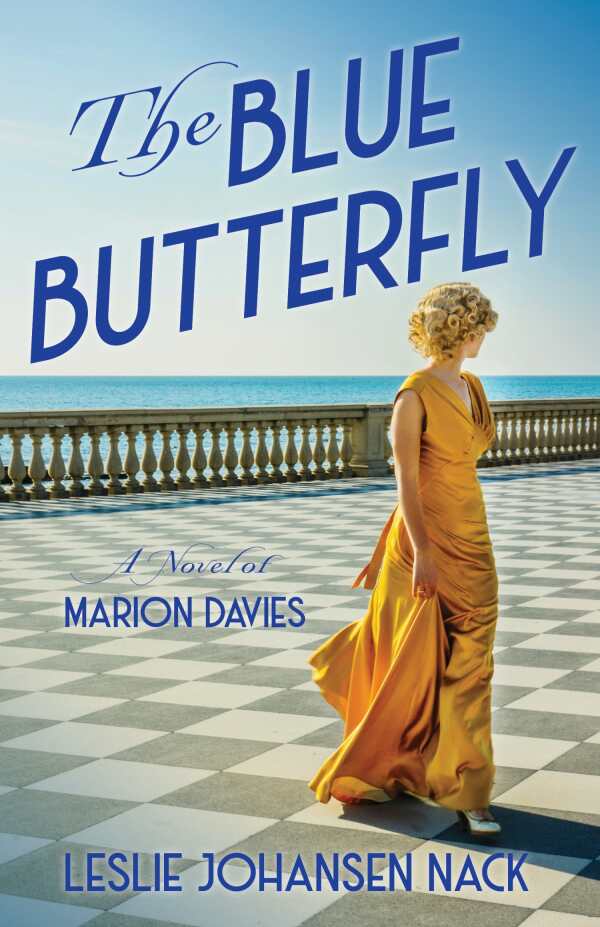The Blue Butterfly
A Novel of Marion Davies
The Blue Butterfly is a vibrant period novel that reimagines the controversial love story of a classic film star.
Leslie Johansen Nack’s absorbing historical novel The Blue Butterfly follows Marion, the vulnerable mistress of William Randolph Hearst, from her days as a stage ingénue into stardom and its aftermath.
Marion, a Brooklynite, aspires to join her sisters in the theater. Encouraged by their mother, who hopes that her daughters will find wealthy patrons, she dances in the Ziegfeld Follies, where she attracts WR, a married newspaper tycoon. In this straightforward account of their adultery, Marion is a vivacious, goal-driven, sincere young woman. At first hesitant about her connection to WR (she worries about being considered a gold digger), she eventually moves into properties at his behest, including San Simeon. But her acceptance of her affair with WR evolves into resignation about having “everything a girl could dream of—except for an authentic life.”
The book covers biographical milestones and WR’s lavish gestures toward Marion, who’s honest about her longing for stability. She’s sometimes petulant, and expresses displeasure about WR’s wife. Marion’s interactions with secondary characters, including family members and historical figures like Charlie Chaplin, reveal subtler facets of her nature, including her generosity; these are juxtaposed with WR’s comparative faults.
Beside Marion, WR is constructed as a man with bottomless funds whose doting keeps Marion in thrall. But he tends toward sweeping gestures, and his speeches, especially in the book’s early sections, seldom move beyond praise and reassurance. As a result, he’s an elusive leading man. The relationship is idealized, even though Marion is aware that the open secret of it is taboo.
The text is propelled by separations due to WR’s other commitments; these are followed by reunions in extravagant settings. This pattern prevents the development of true momentum, though. Meanwhile, casual hints that WR is controlling are swept aside. More involving are Marion’s pre-Hollywood years, in which she is variously naïve, wistful, determined, and zealous; the drama surrounding an out-of-wedlock baby inspires empathy. Once Marion enters Hollywood, though, she becomes self–indulgent. The book’s later chapters are devoted to the Hearst empire’s fate, Marion’s family members, and her waning career; they are faithful to facts and suggest satisfying maturation on the heroine’s part.
The Blue Butterfly is a vibrant period novel that reimagines the controversial love story of a classic film star.
Reviewed by
Karen Rigby
Disclosure: This article is not an endorsement, but a review. The publisher of this book provided free copies of the book and paid a small fee to have their book reviewed by a professional reviewer. Foreword Reviews and Clarion Reviews make no guarantee that the publisher will receive a positive review. Foreword Magazine, Inc. is disclosing this in accordance with the Federal Trade Commission’s 16 CFR, Part 255.

